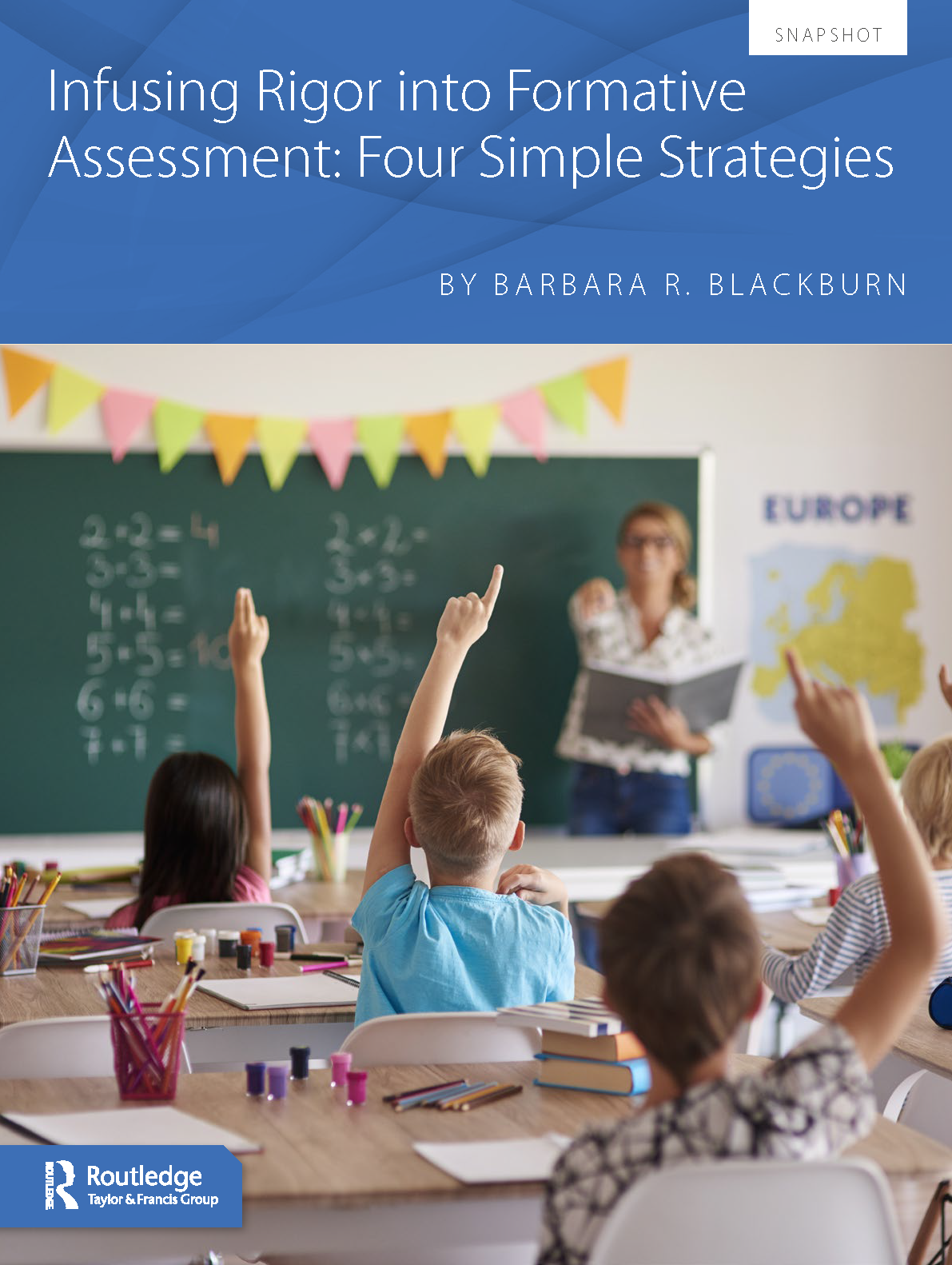Assessment is a challenging issue in today's classrooms, and also one of the most powerful tools we have to impact student learning. Instruction is effective only when paired with active assessment, so what can teachers do to ensure they are assessing students in a way that impacts learning? When crafting your classroom assessment, consider these four strategies.


1. Integrate Movement
Take a moment to recall a PD session you found particularly dull. Were you sitting for most of the time? Most likely you were, and most likely that contributed to your troubles paying attention. Do you remember what you learned? Have you implemented those strategies into your teaching? Again, it’s likely you did not.
The same difficulty to sit still and pay attention occurs in students. Students who are active and engaged learn at higher rates, but unfortunately educators often think of classroom movement more for younger students. The learning benefits of movement are crucial for students of all ages, and there are easy ways you can incorporate movement into your classroom and into your formative assessment, too!
Try out this classic strategy for some active formative assessment: Four Corners. The teacher provides a prompt, posts potential answers in each corner of the room, and then asks to students to move to the corner that best represents the answer. One problem with Four Corners is that it offers students the opportunity to “follow the crowd,” so be sure to choose prompts that don’t have “right” answers, but instead require critical thinking. For example, for a World Languages teacher, a possible prompt might be: If you won a free vacation to anywhere in the world, which Spanish-speaking country would you visit? Be ready to justify your answer with examples of history, arts, food, and other cultural aspects.
It is critical to formative assessment that the teacher doesn’t simply observe where the students stand but listens to the explanations behind their answers and uses that information to reteach or adjust their own methods as necessary.

2. Increase the Rigor of Your Summative Assessments
Summative assessments are traditionally used at the end of a unit to assess student understanding. Traditional summative assessments such as true or false, multiple choice, fill in the blank, short answer, and essay questions are valuable, but teachers should be careful not to overuse or misuse these methods, which may result in limiting student learning to memorization or low-level understanding.
There are dangers to traditional summative assessment, but teachers can minimize them by increasing the rigor of the questions. Try focusing on the short answer format— this is simpler to assess than the longer-form essay question but it still requires students to create their own response. Short answer is inherently more rigorous than multiple choice or true or false.
To write better short-answer questions, focus on clarity. Be certain the question makes expectations clear and keep the reading level low, avoiding all specialized vocabulary, so that reading the question is not an obstacle to answering the question. Structure the questions so that it requires a unique response, not just fact memorization and recall. Check out the examples below:
- Less Rigorous Example
What are two ways in which the vast desert regions of Southwest and Central Asia affect the lives of the people who live there?
- More Rigorous Example
Which of the two deserts, the Gobi or the Karakum, is easier for surviving for those who might live there and why?
|
||
| Download Your Free Snapshot |
|

Matching Reading Data to Interventions : A Simple Tool for Elementary Educators, 1st Edition
Author(s): Jill Dunlap Brown, Jana Schmidt
Price: $38.95
Cat. #: K421652
ISBN: 9780367225070
Publication Date: September 06, 2019
Binding: Paperback

20 Formative Assessment Strategies that Work : A Guide Across Content and Grade Levels, 1st Edition
Author(s): Kate Wolfe Maxlow, Karen L. Sanzo
Price: $38.95
Cat. #: Y329853
ISBN: 9781138046764
Publication Date: October 27, 2017
Binding: Paperback

Rigor and Assessment in the Classroom, 1st Edition
Author(s): Barbara R. Blackburn
Price: $32.95
Cat. #: Y204080
ISBN: 9781138936140
Publication Date: February 16, 2017
Binding: Paperback

Math Running Records in Action : A Framework for Assessing Basic Fact Fluency in Grades K-5, 1st Edition
Author(s): Nicki Newton
Price: $34.95
Cat. #: Y203089
ISBN: 9781138927643
Publication Date: June 21, 2016
Binding: Paperback







